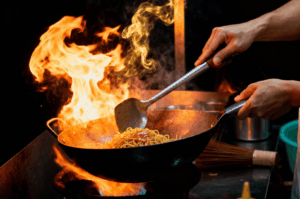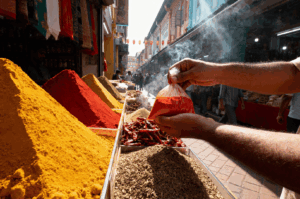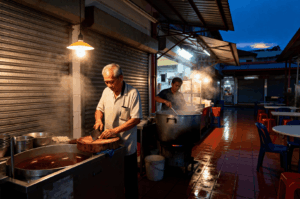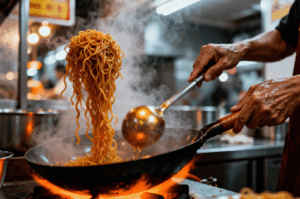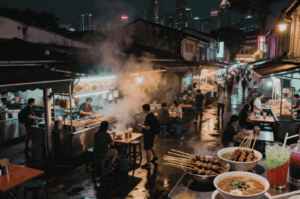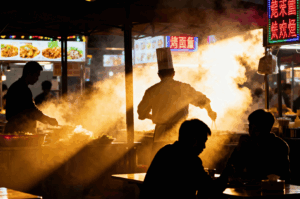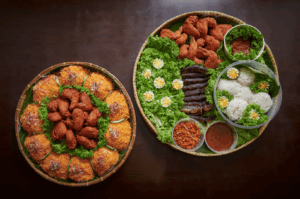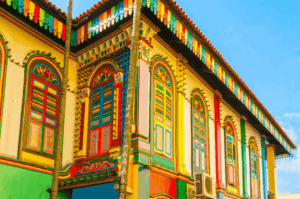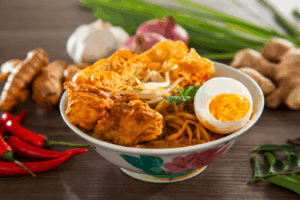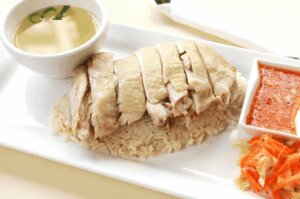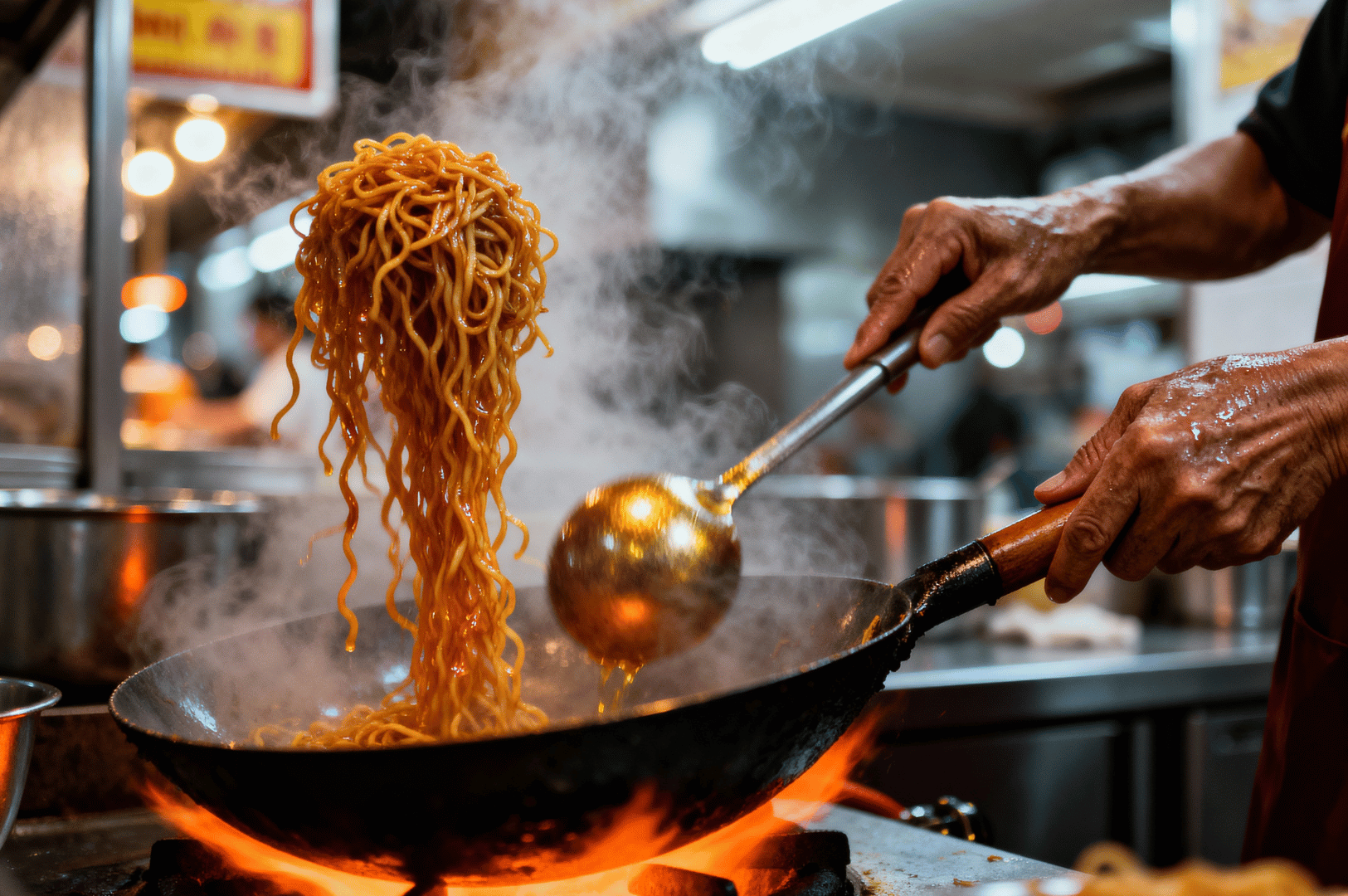
In the vibrant heart of Singapore's hawker centres, a visual story unfolds with every dish. It’s a narrative told not just through rich flavor and enticing aromas, but through motion, heat, and the tireless hands of culinary artisans. For food photographers, this environment is a goldmine of authenticity and action. The real magic lies in capturing the cooking process, where hands—weathered, swift, and precise—transform simple ingredients into culinary masterpieces. This is where food photography transcends static, plated shots and becomes a dynamic chronicle of culture and craft.
This guide is for food photographers, from aspiring home cooks with a camera to seasoned professionals, who want to capture the soul of Singapore hawker culture. We will explore how to frame the blur of a stir fry, the delicate fold of a dumpling, and the intense heat of a deep fryer. We'll delve into cooking techniques, camera settings, and lighting tips to help you create eye-catching images that honor the hands-on experience behind every plate. Get ready to turn your lens towards the hands that cook food and tell the story of a nation.
The Hawker's Hands: Your Main Subject
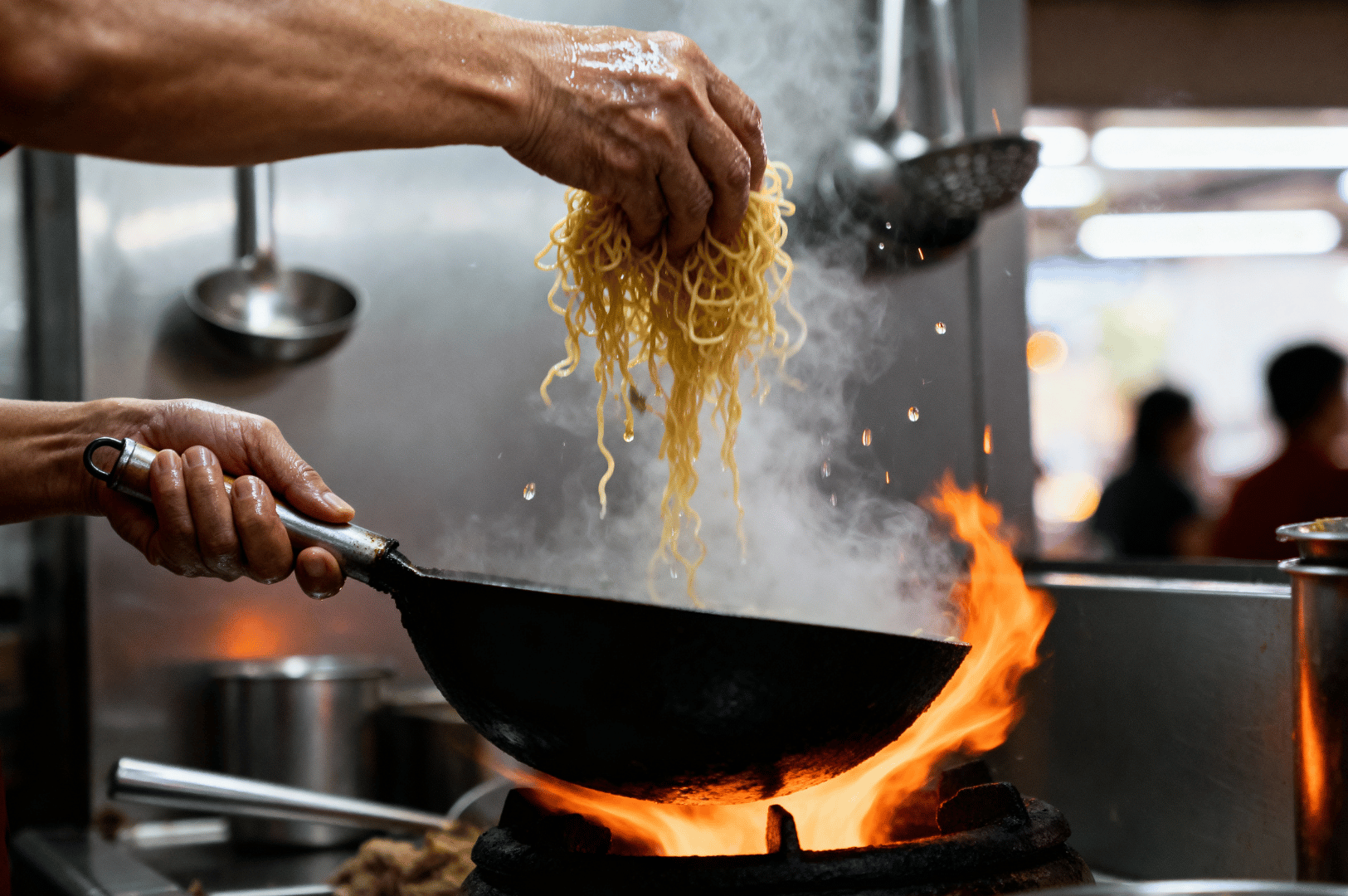
When you photograph a hawker at work, their hands are the protagonists of your story. These hands perform a ballet of muscle memory, showcasing traditional cooking methods passed down through generations. Your goal as a food photographer is to translate this motion and skill into a single, powerful frame. Focusing on the hands provides an intimate perspective, drawing the viewer into the cooking process and highlighting the human element behind the food.
To make these hands the main subject, a shallow depth of field is your best friend. By using a wide aperture (a low f-stop), you can isolate the hands and the food they are preparing, blurring the bustling background. This technique directs the viewer’s eye exactly where you want it to go, creating images with more depth and professional polish. The visual appeal of a hand dusting flour or drizzling cooking oil can be incredibly powerful, turning a simple action into a piece of art.
Mastering Light: Natural vs. Artificial
Light is the most critical element in food photography. In a hawker setting, you'll encounter a mix of lighting conditions, and knowing how to work with them is key.
Harnessing Natural Light
Natural light is often preferred by food photographers for its soft, authentic quality. Many hawker centres are open-air, providing ample opportunity to use it. Position yourself where the light source illuminates the hawker's station without being too harsh. An overcast day is ideal, as it diffuses the light, preventing harsh shadows. If the sun is too bright, look for a spot where the stall is in the shade. A simple white sheet or reflector can be used to bounce light back onto the subject, filling in shadows and ensuring you have enough light for a crisp shot.
Working with Artificial Lighting
Inside many hawker stalls, you’ll contend with fluorescent or artificial lighting. This can create a challenging color cast, so setting your camera's white balance correctly is crucial. While professional photographers might bring studio lights for a controlled shoot, that's not practical in a live hawker environment. Instead, embrace the existing light. The steam rising into an overhead lamp or the glow from the stove can trap heat and light in a way that adds drama and atmosphere to your food photos. Don’t be afraid of shadows; they can add mood and a sense of place.
Capturing Motion: Shutter Speed and Technique
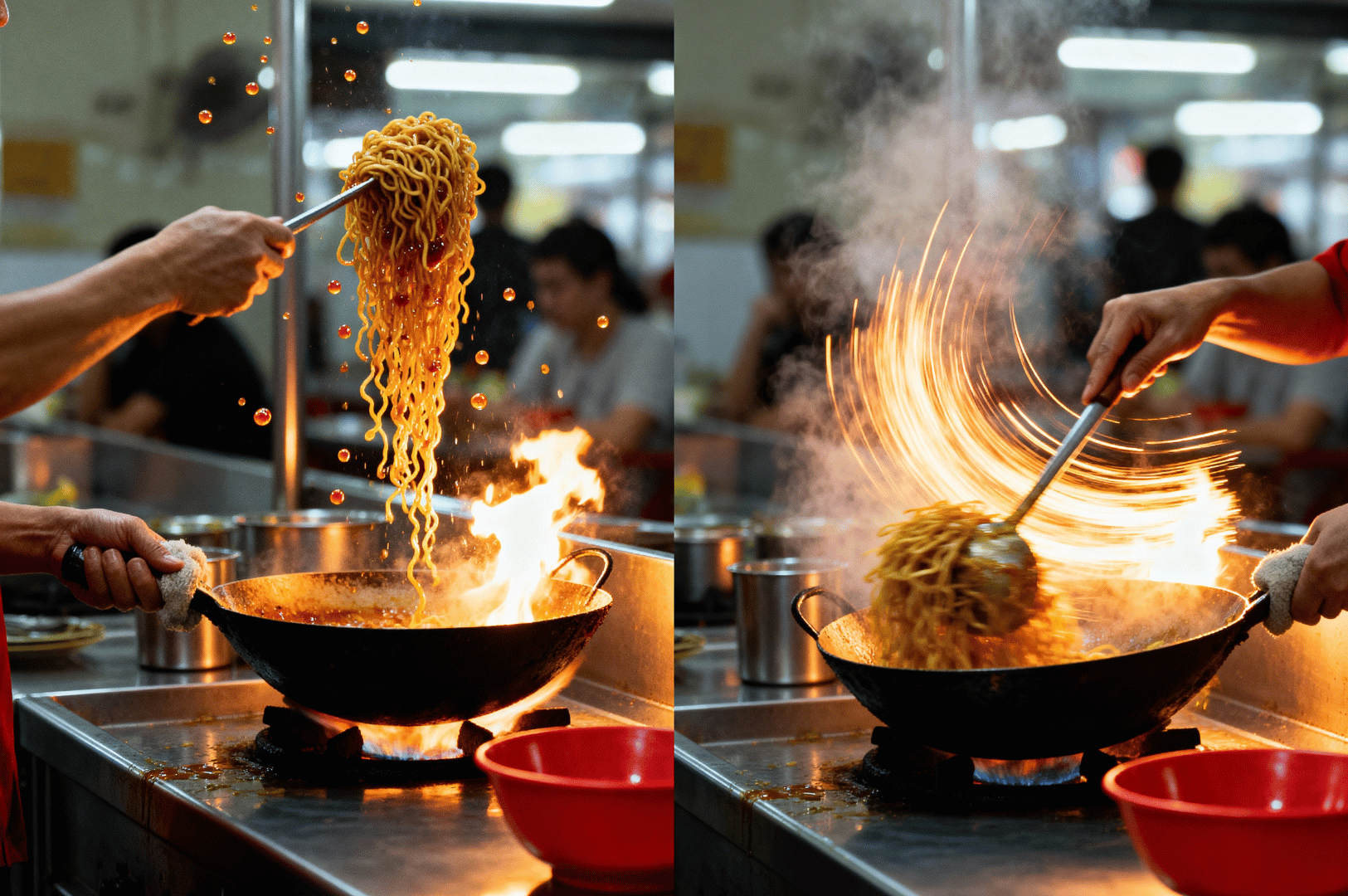
Hawker cooking is a high-energy affair. From the rapid toss of stir frying to the sizzle of deep frying, movement is constant. Your shutter speed setting will determine how you capture this action.
Freezing the Action
To capture a hawker's hand in a moment of peak action—noodles flying in mid-air or oil splattering from a pan—you need a fast shutter speed (e.g., 1/500s or faster). This freezes the motion, resulting in sharp, detailed images that showcase the intensity of the cooking process. This technique is excellent for highlighting specific Chinese cooking techniques that rely on speed and high heat. A tripod can help eliminate camera shake, ensuring your shot is perfectly sharp.
Embracing the Blur
Alternatively, a slower shutter speed (e.g., 1/30s) can create an artistic motion blur. This technique conveys the energy and speed of the hawker's work, turning their hand movements into fluid streaks of light and color. To do this effectively, keep your camera steady and let the subject move within the frame. This can produce incredibly dynamic and eye-catching food photos that tell a story of tireless effort. Pan frying, where the hawker constantly moves ingredients, is a great opportunity to experiment with this.
A Focus on Cooking Methods and Visual Appeal
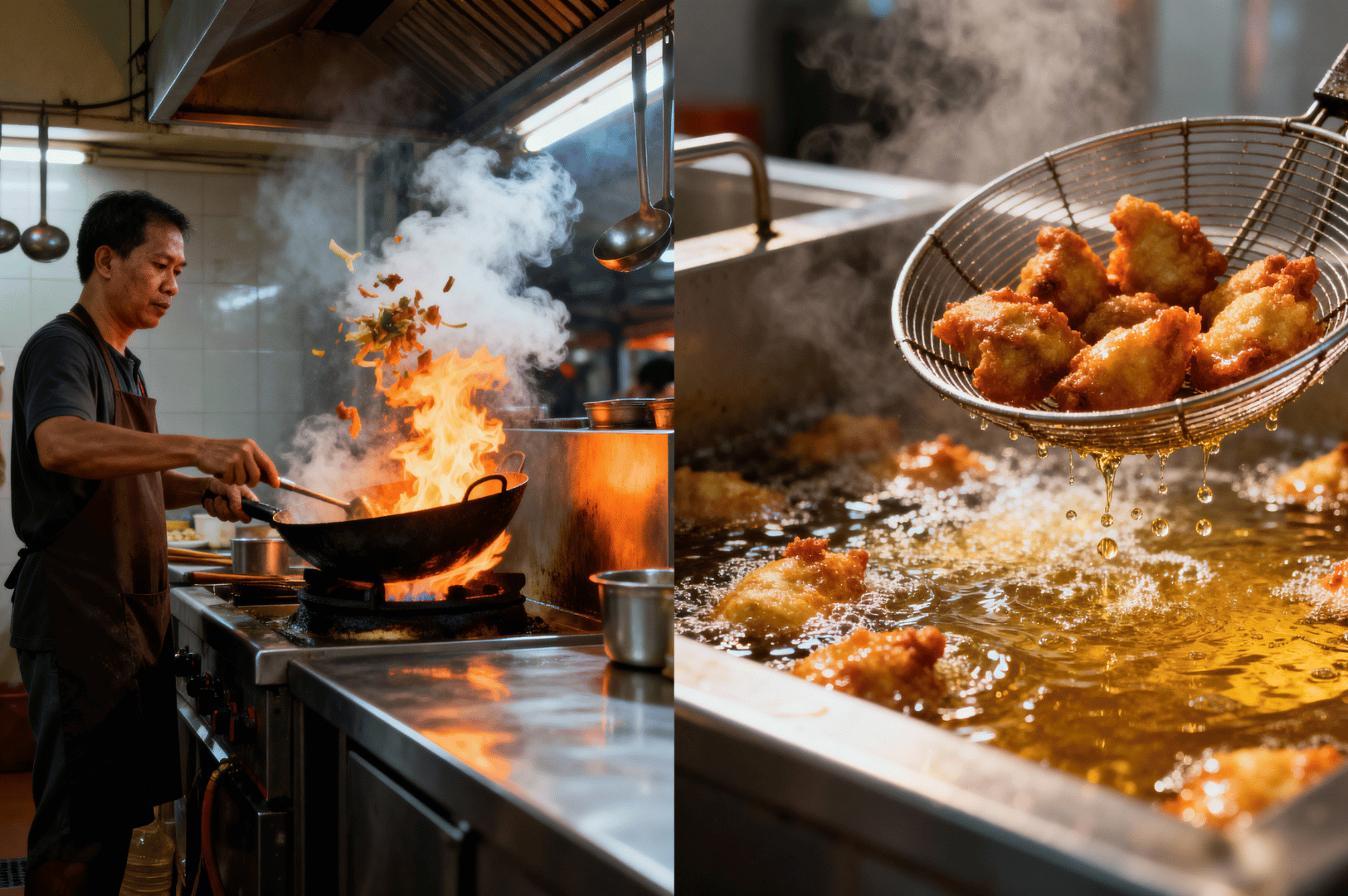
Different cooking methods offer unique photographic opportunities. Understanding what to look for can help you anticipate the perfect shot.
The Art of Stir Frying and High Heat
Stir frying is a cornerstone of Chinese cooking and a spectacle to behold. The hawker uses high temperature and a seasoned wok to cook food quickly. The key visual moments include the initial sizzle as ingredients hit the hot cooking oil, the plume of steam that erupts, and the powerful toss that sends everything airborne. Try a low camera angle to make the flames look more dramatic and to capture the focused expression of the hawker.
The Intensity of Deep Frying
Deep frying involves submerging food in hot cooking oil until it is fully cooked and golden brown. The bubbling oil creates a fantastic texture for your images. Focus on the moment an item is lowered into the fryer or lifted out, dripping with oil. The contrast between the dark oil and the bright, crispy food can make your images pop. Be mindful of safety when shooting near hot oil.
The Patience of Red Cooking
Red cooking, or red stewing, is a slow Chinese cooking method. Tough cuts of meat, like chicken or pork, are simmered over a low flame for an extended period in a rich mixture of soy sauce, spices, and often a meat stock. This combination cooking method tenderizes the meat and allows it to infuse flavor.
Photographically, the focus here is on the rich, dark cooking liquid and the glossy sheen on the meat. Capture the steam rising from the covered pot or the moment the hawker ladles the sauce over the finished dish. Adding herbs as a final garnish introduces a pop of complementary color.
The Precision of French Cooking Techniques in Modern Hawker Stalls
While not traditional, some modern hawkers incorporate elements of French cuisine, like sous vide cooking. This method involves vacuum-sealing food and cooking it in a precisely controlled water bath at a low temperature. Capturing this process involves highlighting the technology and precision. A shot of the food sealed in bags within the water bath, or the final searing process after it’s removed, can tell a story of culinary innovation blending with tradition.
Composition and Storytelling of Food Photographers
Beyond technical settings, strong composition is what elevates good food photos to great ones.
Camera Angles and Perspectives
Don't shoot everything from the same angle. Get low to the ground, shoot from above, or find a unique side perspective. A different camera angle can completely change the narrative of an image. For instance, capturing melting cheese from a low angle makes it look more decadent, while an overhead shot of many dishes being prepared at once can convey the scale and pressure of the hawker's work.
Using Negative Space
Negative space—the empty area around your main subject—can be a powerful tool. It gives the subject room to breathe and helps draw the viewer's attention. Instead of filling every one frame with action, try composing a shot where the hawker's hands are a small but significant element in a larger, quieter scene. This can create a sense of focus and calm amidst the chaos.
Telling a Story in a Second Image
Consider creating a diptych or a series of photos. A first image might show the raw vegetables and meat, while a second image shows the final dish. This before-and-after approach is a simple yet effective way to illustrate the transformation that occurs during the cooking process. It highlights the hawker's skill in turning basic components into a delicious meal.
Embracing Food Photography
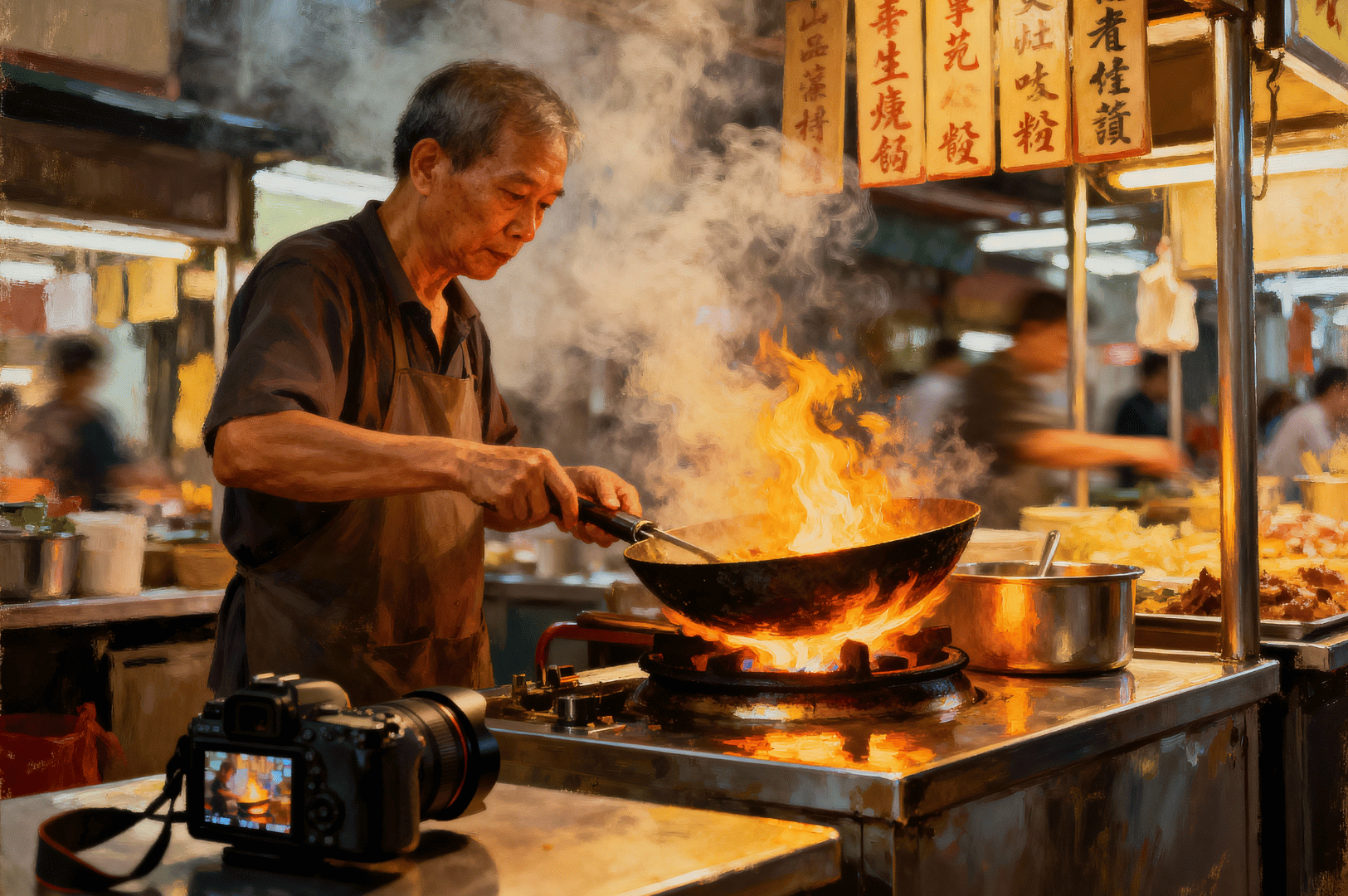
Food photography in a Singapore hawker centre is a form of documentary art. It’s about capturing the culture, the tradition, and the immense skill embedded in the hands of the artisans. By focusing on the hands at work, you create a powerful visual narrative that celebrates the cooking process itself.
Whether you're using natural light to capture delicate vegetables being prepared or a fast shutter speed to freeze the drama of high-heat stir frying, your camera becomes a tool for preservation. Each image that highlights a traditional method or a moment of intense focus pays homage to the heritage of Singapore hawker culture.
So next time you're in a hawker centre, look beyond the plate. Observe the hands, anticipate the action, and capture the craft. You’ll find that the most compelling stories are told in the heat of the moment.
To keep exploring the culture behind the cuisine, check out our night food tours in Singapore or learn more about the flame and smoke behind satay.
Wok Hei Photography: Capturing the Forbidden Pleasure of Char Kway Teow
October 24, 2025
In the heart of Singapore, amidst the symphony of sounds and smells that define its hawker centres, a culinary performance unfolds. The creation of char kway teow is a spectacle of fire and skill, a…
Little India Spice Photography: The Seduction of Senses on the Spice Trail
October 20, 2025
The moment I step into Little India, my camera feels like an extension of my senses. The neighborhood is a visual feast, a sensory overload that defines Singapore’s food scene. As a photographer dedicated to…
Pre Dawn Hawker Rituals: The 4AM Warriors at Maxwell Food Centre
October 17, 2025
Long before the city awakens, a deep dedication to Singaporean food culture is already stirring within Maxwell Food Centre. While most of Singapore sleeps, a silent ritual begins. Here, in the quiet, pre-dawn hours, the…
Hands & Heat of Singapore Hawker Culture: A Food Photography Guide
October 13, 2025
In the vibrant heart of Singapore’s hawker centres, a visual story unfolds with every dish. It’s a narrative told not just through rich flavor and enticing aromas, but through motion, heat, and the tireless hands…
Singapore Night Food: Secret Tours & After Dark Culinary Delights
October 10, 2025
Steam billows from a wok, catching the neon glow of a nearby sign before vanishing into the humid night air. The sharp, tantalizing aroma of chili, fried chicken, and garlic mixes with the sweet char…
Steam & Shadows: Singapore Hawker Culture and the Dance at Maxwell Food Centre
October 6, 2025
Under the roof of Maxwell Food Centre, steam and light collide, casting deep shadows across glowing stalls. This is the soul of Singapore hawker culture, where every hawker stall tells a story and every plate…
Exploring Chinese Malay Fusion Cuisine: The Forbidden Union of Peranakan and Nyonya Food in Singapore
October 3, 2025
Step into Singapore’s hawker centers or heritage shophouses in Katong and Joo Chiat, and you’ll discover Peranakan cuisine-a vibrant fusion of Chinese ingredients and Malay cuisine. This culinary tradition, also known as Nyonya food, combines…
Spice Route: Little India Food Photography
October 1, 2025
Little India is at the heart of Singapore food, famous for its vibrant hawker centres, diverse dishes, and energy that draws both locals and visitors. Anyone interested in Little India food photography will find a…
Golden Hour Food Photography: Mastering Natural Light with Laksa
September 26, 2025
Picture a bowl of fiery laksa, its surface shimmering with a glossy glow as aromatic steam curls into the air. For food photographers, that sense of warmth and shine is a magical moment to capture-a…
The Slow Seduction: Hainanese Chicken Rice
September 22, 2025
Before you even take a bite, a plate of Hainanese chicken rice beckons with its glossy, tender chopped chicken cut, silky chicken skin, and a mound of glistening, chicken fat-infused rice. The delicate fragrance of…

